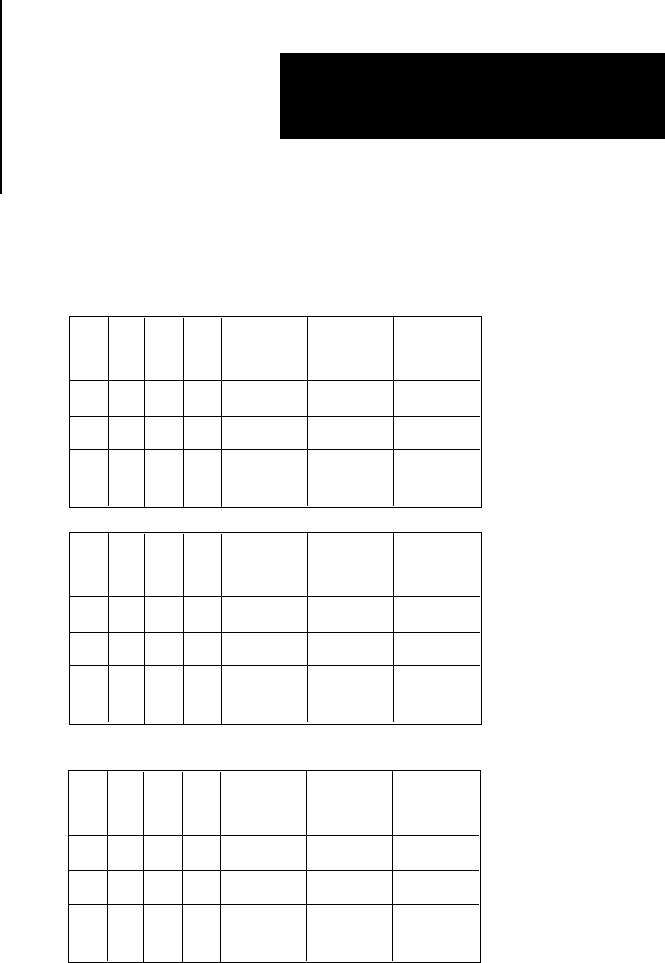User Manual Owner's manual
Table Of Contents
- 1772-6.5.8, Mini-PLC-2/02, -2/16, -2/17 Processor, User Manual
- Important User Information
- Summary of Changes
- Table of Contents
- 1 - Using This Manual
- 2 - Fundamentals of a Programmable Controller
- 3 - Hardware Features
- 4 - Installing Your Programmable Controller
- 5 - Starting Your Processor
- 6 - Maintaining and Troubleshooting Your Processor
- 7 - Memory Organization
- 8 - Scan Theory
- 9 - Relay-Like Instructions
- 10 - Program Control Instructions
- 11 - Timers and Counters
- 12 - Data Manipulation and Compare Instructions
- 13 - Three-Digit Math Instructions
- 14 - EAF Math Instructions
- 15 - EAF Log, Trig, and FIFO Instructions
- 16 - EAF Process Control Instructions
- 17 - Jump Instructions and Subroutines
- 18 - Block Transfer
- 19 - Data Transfer Instructions
- 20 - Bit Shift Registers
- 21 - Sequencers
- 22 - Selectable Timer Interrupts
- 23 - Report Generation
- 24 - Program Editing
- 25 - Programming Techniques
- 26 - Program Troubleshooting
- A - Specifications
- B - Processor Comparison Chart
- C - Number Systems
- D - Glossary
- E - Quick Reference
- Index
- Back Cover

EAF Math Instructions
Chapter 14
14-5
Figure 14.2
EAF
W
ord Format in the Data T
able After Address Entry
17 16 15 14 107 43
Data
0
S Digit 1 Digit 2 Digit 3
Digit 4
Digit 7
Digit 10
Digit 5
Digit 8
Digit 11
Digit 6
Digit 9
Digit 12
Operand A
MSD
LSD
040
041
042
043
S Digit 1 Digit 2 Digit 3
Digit 4
Digit 7
Digit 10
Digit 5
Digit 8
Digit 11
Digit 6
Digit 9
Digit 12
Operand B
MSD
LSD
047
050
053
057
Result
Address
Result
060
061
062
063
10349-I
13
X S 0 O/U
Digit 1 Digit 2 Digit 3
Digit 4
Digit 7
Digit 10
Digit 5
Digit 8
Digit 11
Digit 6
Digit 9
Digit 12
MSD
LSD
Address
Entry
and Display of Input and Result V
alues
You can monitor the values in the Operands and Result words by entering
the instructions shown in Figure 14.3. This figure shows one method for
monitoring input and result values of an EAF instruction.
The shaded portion is called a primary ladder diagram. It contains
Operand B and an EAF block. You can have as many as 4 Gets in this
rung to select Operand B and they need not be consecutive data table
addresses. Any rung conditions must be at the beginning of the rung.
Nothing except a Branch End can be between the Gets and the EAF.
Operand A must have four consecutive data table word addresses. They
can be stored anywhere in your data table.










